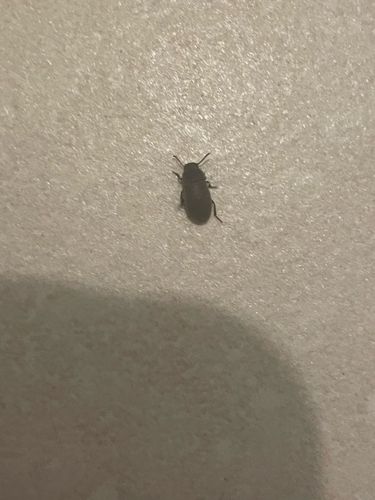Darkling Beetle (possibly a Mealworm Beetle)
Scientific Name: Tenebrionidae (family level, specific genus/species difficult to determine from image alone, but could be Tenebrio molitor for mealworms or Tribolium species for flour beetles)
Order & Family: Order: Coleoptera, Family: Tenebrionidae
Size: Typically 3-30 mm, depending on the specific species. The one in the image appears to be on the smaller to mid-range end, likely 5-15 mm.

Natural Habitat
Darkling beetles are highly adaptable and can be found in a variety of habitats, including deserts, forests, grasslands, and agricultural areas. Many species, particularly those that are pests, can infest stored food products in homes, pantries, and warehouses.
Diet & Feeding
Most darkling beetles are scavengers, feeding on decaying plant and animal matter. Some species are omnivores and will eat grains, flour, seeds, and even other insects. The larval stage (mealworm) is well-known for eating grains and other dry goods.
Behavior Patterns
This specific beetle, likely a darkling beetle, is typically nocturnal and often seeks shelter during the day. They are generally slow-moving, especially when disturbed. Larvae (mealworms) are also often hidden in food sources.
Risks & Benefits
Potential Risks: Some species, like the confused flour beetle or red flour beetle (both within the Tenebrionidae family), are common pantry pests that can contaminate stored food products. While generally not harmful to humans, their presence can lead to food spoilage and economic losses. Potential Benefits: Some darkling beetles, particularly their larvae (mealworms), are raised as a food source for pets (reptiles, birds) and increasingly for human consumption due to their protein content. Many species also play a role in decomposition in natural ecosystems.
Identified on: 8/8/2025